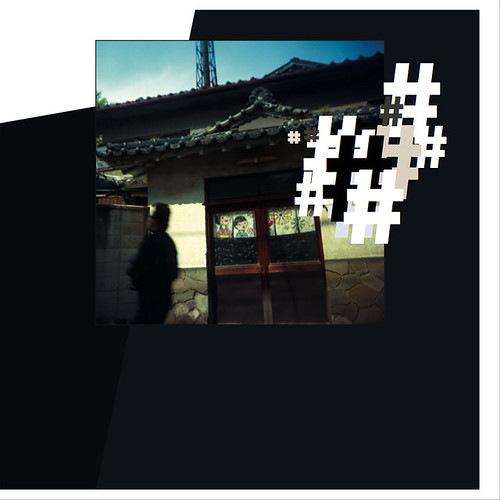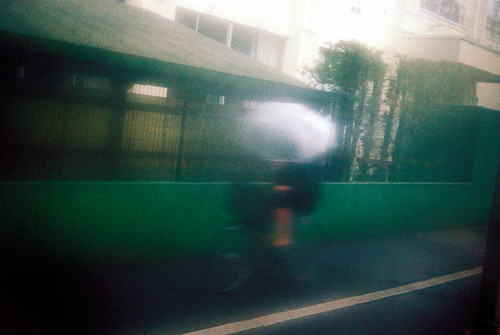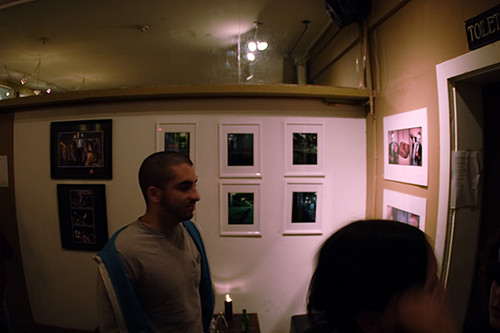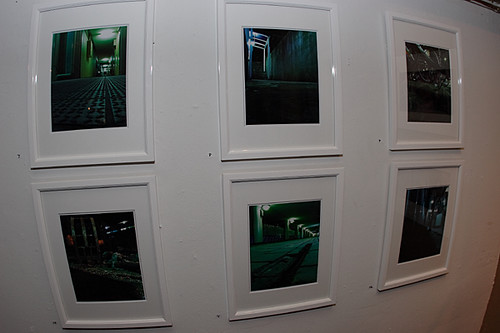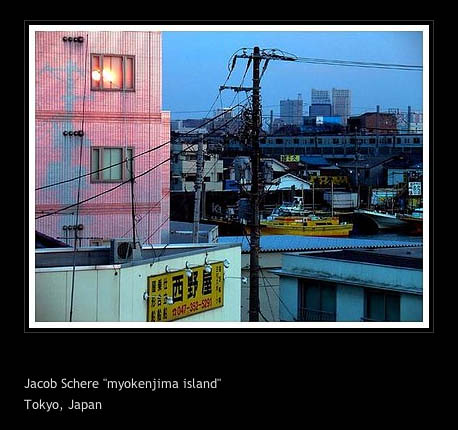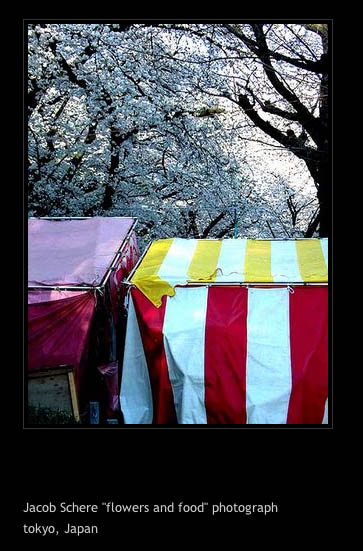I wanted to post this article of mine that was published by the Japanese magazine Chuokoron [ Central Review ] Magazine back in 2002, April . It was my reaction to the events of 9-11 when I visited the devastated city in November of 2001. It was the first time that an editor asked me to write about the images that they published.
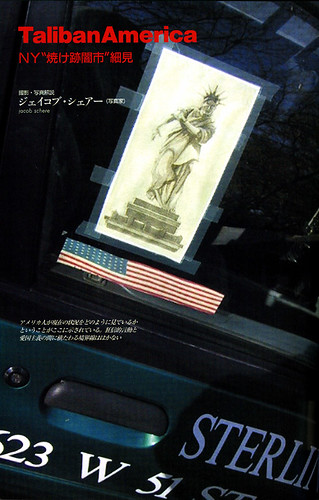
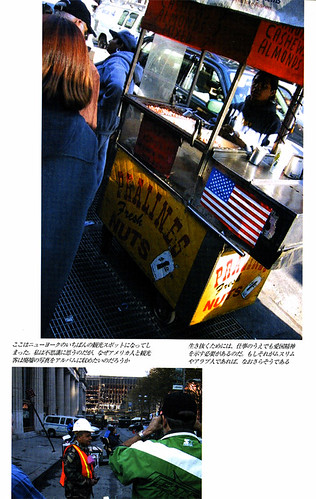


Below is a translation of the article written by Akasaka Mari, and my comments on each picture.
1. This is how most Americans see our current situation ;however, there is a thin line between fanaticism
and patriotism.
2. In order to survive you have to show your patriotism on your place of business. If you happen to be Muslim or an Arab then you have to prove your patriotism even more.
3. The site has become the number one tourist attraction in NYC. I wonder why Americans, and tourists would want to keep photos of the destruction in their family albums.
4. Whoever put this graffiti up in my eyes is a true patriot. They are putting America ahead of any fabric, paper or dollars.
5. All that are left of the WTC are images, memories preserved on celluloid, and cheap souvenirs.
6. Only in America can I find whips, feather boas, and how much money has been raised for the fire fighters fund. Red, White and Hot Pink.
7. How did this tiny creature survive the destruction and why is this boy here. Humans can be kind to animals but often he are inhumane to other humans.
8. People should think about similarities between cultures; however, it is easier to point out differences and use that to subjugate them.
You are a Jewish American
by Mari Akasaka
I have been wondering who is this person? I only know his first name because his name is embroidered in Katakana on his Aikido belt. I figured out that he is American and probably Jewish. He stands out at the Aikido dojo where I go. He has some sort of mystic silence about him. This somehow reminds me of Budo [martial arts.] Not too oreintalistic but balanced. It’s like touching universality through Budo. Budo itself is that. In other words, he’s good at seeing the universality in his pictures, and accessing that methodology. That’s why wherever he is, he is balanced.
That is a characteristic of his personality and the Jewish collective personality. I’m envious of someone who naturally reflects the characteristics of his group. Japanese tend to be apart from that. The first time that I talked with him was at last years big Aikido Demonstration. He was a little bit down because he made an interesting mistake whereas he wasn’t able to make it to the finals. He performed perfectly but it wasn’t the correct technique. I found out that he has a light-hearted side. “I was confused today,” he said. That was the first weekend after the September 11 incident. “Is Jacob the disciple of Yakov?” I asked. “That’s right, I’m a Jew.” he replied. I wanted to ask this question first but he answered it right away. The story Yakov [ Jacob ] is from the Old Testament. “What do you think about the incident, the people’s reaction, the principles of Americanism and the strategies of the Media as a Jewish American?”
These questions grew in my mind. There were so many financial agencies in the WTC. Jews have traditionally been strong in this field, that means it aimed right at the point of connections between Jews and Americans. I think there is a famous saying in America “Don’t talk about politics and religion” What I’m trying to say is that there is a complex that is politics, religion and economics are intensely interconnected and there is a military behind it all. I had to ask these questions. [ These might be in the next issue ] The pictures are an extension of these conversational exchanges. One day he said some impressive words, “I have no culture, I only have the bits and pieces of culture that I have picked up along the way.”
Photos and description
Jacob Schere
Essay
Mari Akasaka
Published
Chuokoron [ Central Review ]
2002, April
